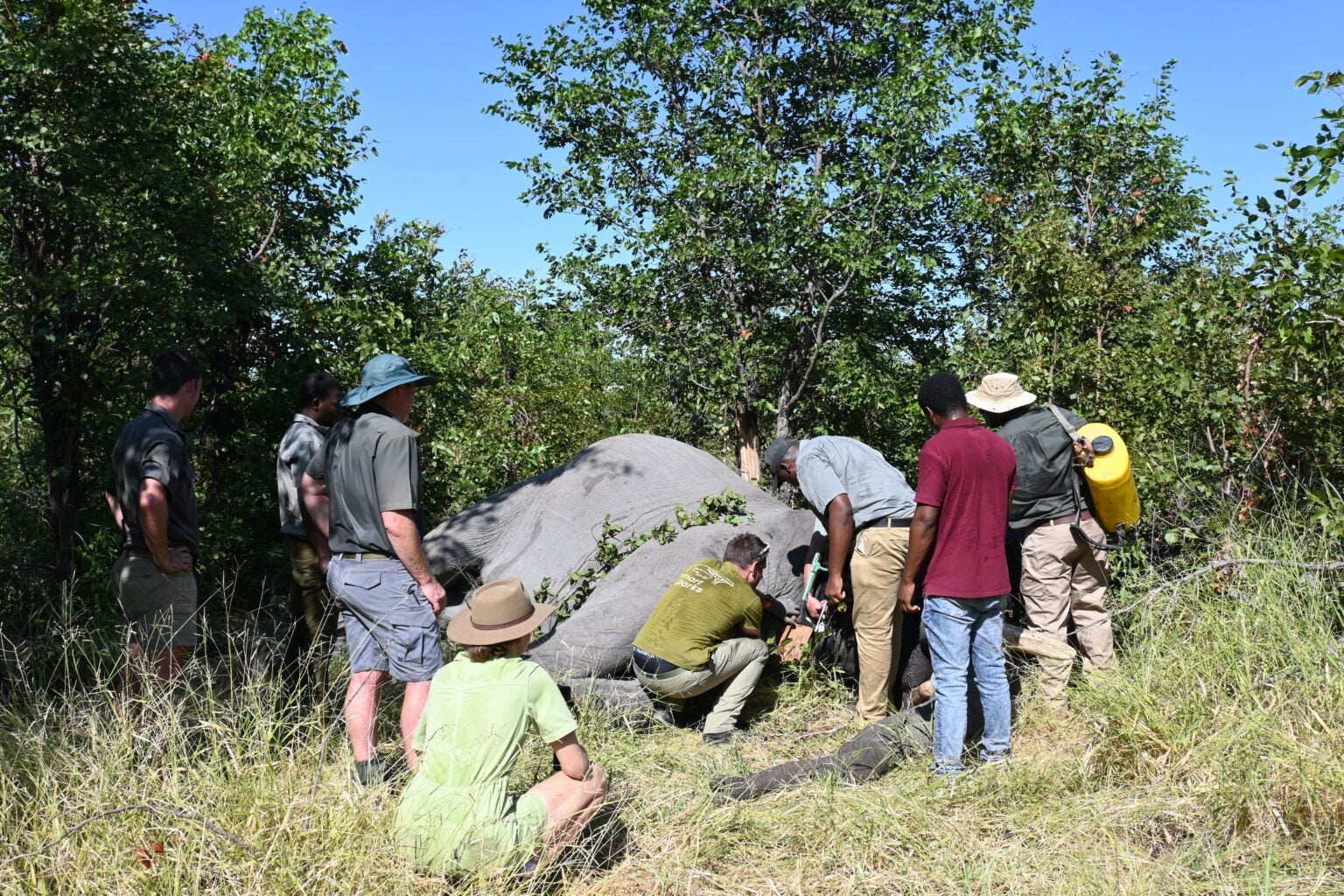Zimbabwe’s Gonarezhou National Park launches wireless tech system to combat wildlife crime
Rhino, elephant and lions to be tracked, collecting data to improve park management

By Farayi Machamire for Zim Morning Post
A new wireless long-range, low-power telecommunication network linking sensors and monitors in Zimbabwe’s second-largest national park has made it more efficient to collect important park management data and thwart poaching.
Seven site installations have been constructed in Gonarezhou National Park in collaboration with Smart Parks — a Dutch non-profit organisation.
The installations create the LoRaWAN (Long Range Wide Area Network) to support the park’s management and field rangers in their mission to protect endangered wildlife species and their habitat.
LoRaWAN-equipped sensors provide critical data such as GPS positions, which have become increasingly important to for example estimate habitat ranges and monitor animal movement.
Smart Parks engineer Ariet Bouman says the network is powered by solar energy and has a much wider range than cellular technologies like LTE or 3G/4G.
“Another great advantage is that the signal is extremely hard to detect by, for example, poachers,” Bouman says.
The key benefits of LoRaWAN are its long-range capabilities, ultra-low power consumption, and consequently low cost of infrastructure, she adds.
The LoRaWAN network collects data from the deployed devices, ranging from sensors in water tanks, weather stations, vehicles, and specially designed animal tracking devices.
“The server processes the data, which is then displayed in EarthRanger – much like an interactive map – an application that collects, integrates, and displays real-time remote sensing data and combines it with field reports to provide a unified view of collared wildlife, rangers, enforcement assets, and infrastructure within a protected area,” Bouman adds.
The LoRaWAN network provides coverage throughout the Gonarezhou National Park 5,000-hectare Intense Protection Zone (IPZ) where black rhinos were recently reintroduced.
In 2021 the Gonarezhou Conservation Trust undertook a large reintroduction program that saw the critically endangered black rhino being successfully reintroduced back into Gonarezhou National Park after a 27-year absence.
To ensure the protection of the black rhinos against poaching, RhinoEdge sensors are extensively tested to be deployed in rhino horns to monitor their movement.
These devices are an important tool to support the boots on the ground that safeguard the safety of these animals.
Gonarezhou is home to roughly 11,000 elephants and it is no surprise that Gonarezhou wishes to track some of the elephants to monitor their movement and habitat usage.
In March 2022, one bull elephant was collared with a Smart Parks ElephantEdge collar, providing park management with GPS positions every 15 minutes.
An additional four ElephantEdge collars were deployed in 2022. Together with previously deployed satellite GPS tracking collars, these devices provide dense elephant movement data.
Real time monitoring of elephant movements is key to preserve habitat and the corridors that link areas used by both elephants and other wildlife.
Smart Parks is currently working hard on the development of their CollarEdge devices, collars that can be used to track for example lions.
“After filtering out the firmware bugs, the devices that are currently out in the field have been performing very well,” Bouman says.
These CollarEdge devices can provide real-time GPS updates every 30 minutes.
“Collecting detailed data on the movement of animals (rhino, elephants and lion) is of great importance for area management, especially considering the ever-growing challenge of protecting these wildlife species and their habitat,” she adds.
Gonarezhou Conservation Trust Director Hugo van der Westhuizen told journalists during a November 2022 media tour that there have been concerns about lion numbers since 2008, but the monitoring and analysis of data has aided in the recovery of lion populations.
A 2017 predator spoor survey estimated a population of 63 lions in the whole of the Park, which is a slight increase from the 2016 estimate of 54 lions.
This number equates to a density of 1.3 lions/100 sq. km which is relatively low compared to other populations in the region. Gonarezhou is in the remote southeast corner of Zimbabwe on the border with Mozambique, with which it shares a 100-km boundary.
The Park is currently assessing data regarding the movement of lions between the Park on the Zimbabwean side and into an unprotected area on the Mozambique side, where poaching is believed to occur.
Collecting data on lion movement and behaviour will assist Gonarezhou in keeping the lion population safe.
This article is reproduced here as part of the African Conservation Journalism Programme, funded in Angola, Botswana, Mozambique, and Zimbabwe by USAID’s VukaNow: Activity. Implemented by the international conservation organization Space for Giants, it aims to expand the reach of conservation and environmental journalism in Africa, and bring more African voices into the international conservation debate. Written articles from the Mozambican and Angolan cohorts are translated from Portuguese. Broadcast stories remain in the original language.
Read the original story here:
Join our commenting forum
Join thought-provoking conversations, follow other Independent readers and see their replies
Comments